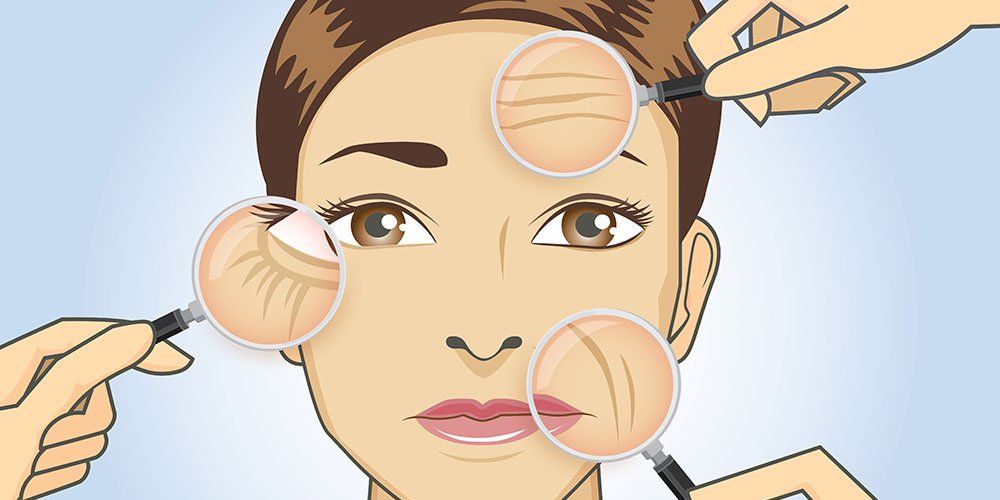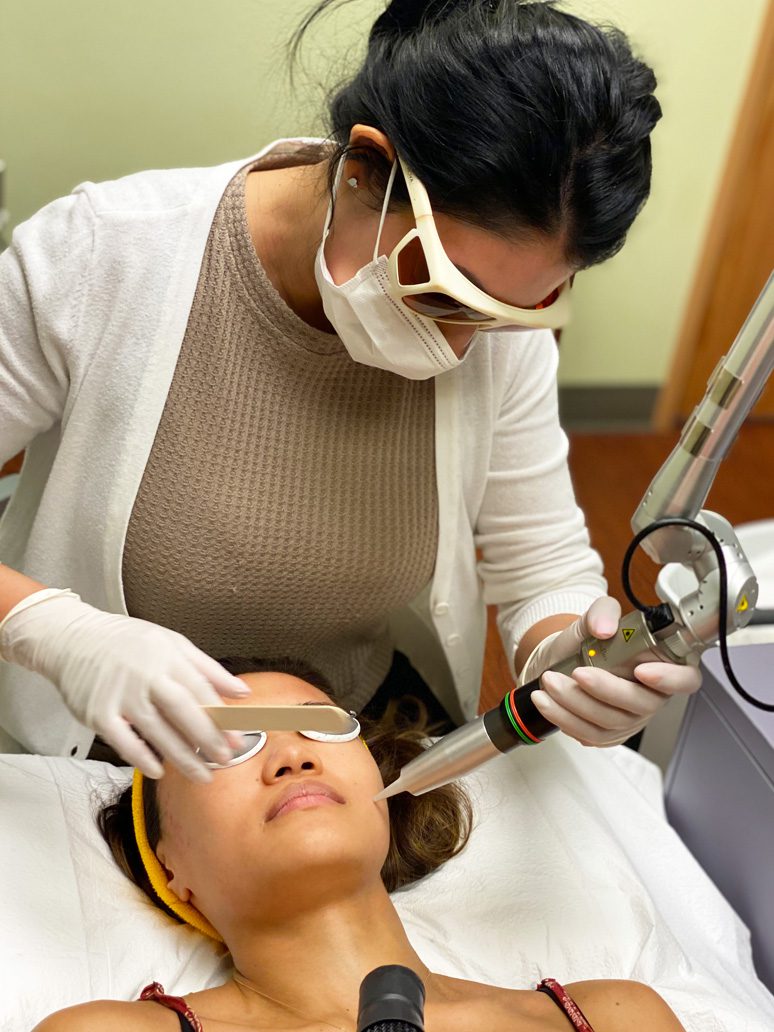The Duty of a Skin Doctor in Detecting and Dealing With Numerous Skin Problems
The duty of a skin doctor extends much beyond standard skin care; it includes the intricate procedures of detecting and treating a vast range of skin problems. The complexity of skin problems typically calls for a diverse strategy that includes not only clinical interventions however additionally individual education and learning and preventative methods.
Importance of Dermatological Expertise
The competence of skin doctors is essential in the medical diagnosis and monitoring of skin disorders, as they possess specialized expertise that expands beyond general medical training. This innovative understanding is essential for precisely determining a vast array of skin problem, which usually present with overlapping symptoms that can confuse non-specialist specialists. Skin specialists are educated to set apart in between various skin conditions, making sure ideal therapy strategies are implemented swiftly.
Furthermore, the area of dermatology incorporates an unique mix of professional abilities and cutting-edge technology. Dermatologists utilize sophisticated analysis devices, such as dermatoscopes and skin biopsies, to evaluate skin lesions and establish their nature. This technical efficiency permits for very early discovery of potentially serious problems, consisting of skin cancers, which can considerably enhance patient end results.

Common Skin Problems Identified
Numerous skin problems can offer with varying degrees of extent and intricacy, making dermatological expertise essential for precise diagnosis and monitoring. Among one of the most widespread conditions are acne vulgaris, dermatitis, psoriasis, and dermatitis.
Acne vulgaris, defined by the existence of comedones, papules, and pustules, mostly impacts teenagers but can continue right into the adult years. Eczema, or atopic dermatitis, is a chronic inflammatory condition that brings about completely dry, itchy, and inflamed skin. Psoriasis is an autoimmune condition that shows up as red, flaky plaques, primarily on extensor surfaces, and can dramatically influence the lifestyle.
Various other usual problems consist of rosacea, which presents with facial flushing and visible blood vessels, and seborrheic dermatitis, typically causing dandruff and oily spots on the scalp. Fungal infections, such as tinea pedis (athlete's foot) and tinea corporis (ringworm), are likewise often run into.
These varied problems call for a comprehensive understanding of pathophysiology, as well as understanding of restorative choices, to lead reliable therapy approaches - Dermatologist Raleigh NC. With exact medical diagnosis, dermatologists can give tailored management strategies that resolve both the signs and symptoms and underlying reasons of these typical skin conditions
Diagnostic Methods Used
Exactly how do dermatologists accurately detect different skin disorders? Dermatologists use a mix of medical evaluations, analysis devices, and specialized methods to guarantee precise identification of skin conditions.
Among the primary analysis techniques is dermoscopy, which makes use of a handheld device to multiply skin lesions, enabling in-depth evaluation of frameworks not visible to the nude eye. Furthermore, skin biopsies are frequently performed, where a small example of skin is eliminated for histopathological analysis. This method is vital for diagnosing conditions such as cancer malignancy and other skin cancers cells.
Spot testing is one more critical method used to identify get in touch with dermatitis by revealing percentages of possible irritants to the skin. Research laboratory examinations, including blood tests and cultures, may be carried out to rule out systemic issues or infections. Collectively, these analysis methods permit dermatologists to create a comprehensive understanding of skin conditions, causing precise diagnoses and notified client management.

Treatment Choices Readily Available
A wide range of therapy options is available for handling skin problems, customized to the specific condition and individual client requirements. Skin doctors use both topical and systemic treatments, relying on the extent and type of skin disorder. Topical treatments, such as corticosteroids, retinoids, and calcineurin inhibitors, are typically recommended for problems like acne, psoriasis, and dermatitis. These representatives target swelling and advertise skin recovery.
For extra extreme problems, systemic therapies might be needed. These include oral medicines such as prescription antibiotics for bacterial infections and immunosuppressants for autoimmune disorders. Biologics, a more recent course of medications, have shown efficacy in treating chronic inflammatory problems like psoriasis and atopic dermatitis.
In enhancement to pharmacologic interventions, skin doctors might suggest procedural alternatives such as laser chemical, photo-therapy, or treatment peels (Dermatologist Raleigh NC). These procedures can resolve coloring issues, acne scarring, and various other skin abnormalities efficiently
Additionally, lifestyle alterations, including proper skin care routines and sunlight protection, play an important role in the total administration of skin disorders. By incorporating these therapy techniques, dermatologists intend to enhance person outcomes and boost lifestyle for those influenced by skin disease.
Person Education and Assistance
Empowerment through expertise is vital in the monitoring of skin conditions, as patient education and learning and support dramatically influence treatment end results. Dermatologists play a crucial role in supplying patients with detailed information regarding their problems, treatment choices, and self-care methods. Reliable communication promotes a joint environment Continued where clients can proactively join their own care.

Assistance extends beyond education; it includes psychological confidence and recurring encouragement. Dermatologists must produce a secure room for patients to express their issues and ask concerns. Resources such as educational handouts, internet sites, and assistance teams can better encourage clients, enabling them to connect with others encountering comparable obstacles.
Ultimately, a well-informed patient is more probable to participate in their treatment journey, leading to better adherence, fulfillment, and enhanced health and wellness results. The skin specialist's role in patient education and assistance is basic to maximizing the management of skin disorders.
Conclusion
To conclude, skin doctors play an essential duty in the reliable medical diagnosis and treatment of a wide variety of skin problems. Their specific experience, incorporated with sophisticated diagnostic strategies and customized treatment plans, makes certain detailed look after patients. In addition, the emphasis on patient education and learning promotes proactive administration of skin wellness, equipping individuals to take enlightened actions concerning their skincare regimens. The contributions of skin doctors substantially enhance the lifestyle for those affected by skin problem.
The role of a skin doctor extends far beyond fundamental skin treatment; it encompasses the elaborate procedures of detecting and dealing with a wide range of skin problems. Skin doctors utilize sophisticated diagnostic devices, such as dermatoscopes and skin biopsies, to analyze skin sores and establish their nature. Ultimately, the specialized training and experience of skin doctors are essential in supplying thorough care for patients with skin disorders.
Furthermore, skin biopsies are often done, where a little example of skin is removed for histopathological analysis. Collectively, these diagnostic techniques allow dermatologists to formulate a comprehensive understanding click over here of skin conditions, leading to accurate diagnoses and informed patient management.